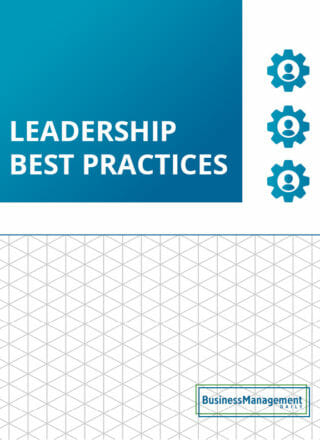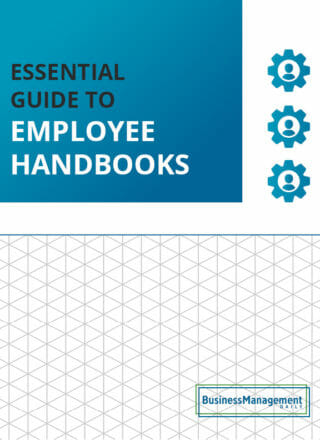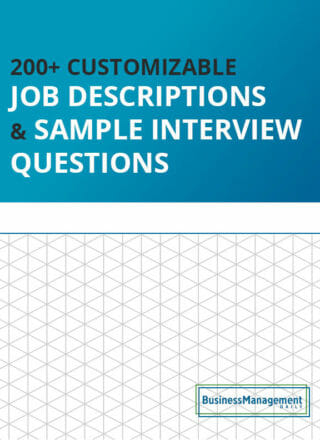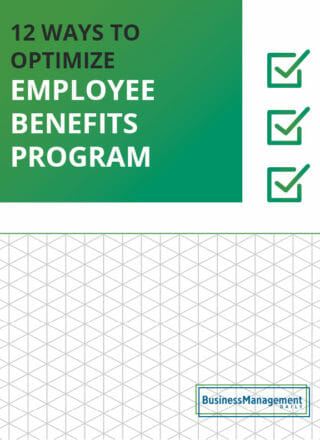Employee experience management best practices
The gap between promise and reality
 You need to provide a positive employee experience to retain your top talent.
You need to provide a positive employee experience to retain your top talent.
That statement is more accurate today than ever, as high salaries are no longer the #1 motivating factor for employees, especially younger ones.
Instead, there’s an increased focus on well-being, employee satisfaction, and providing an inclusive company culture.
Also, it’s essential to realize that your employee experience begins the second you onboard an employee and doesn’t end until their exit interview.
This means everything they learn, see, do, and feel contributes to your employee experience, which can be daunting.
After all, how are you supposed to keep track of everything an employee experiences during their tenure at your organization?
This presents the need for employee experience management, which is what we’re going to discuss today.
With a strong employee experience strategy, you’ll likely see higher employee retention rates and better customer satisfaction.
Yet, according to Kincentric, 49% of employees feel that their organization isn’t delivering on the promised experience, highlighting the need for employee experience management.
Conversely, research by McKinsey found that employees who report having positive experiences are 16 times more engaged than employees who report having negative experiences.
So, taking the time to put together employee experience initiatives is undoubtedly worth it.
Stick around to learn everything you need to know about managing your employee experience, including a list of best practices.
Understanding employee experience management
Employee experience management is about forming a positive work environment by ensuring employees have a pleasant experience from the time they are hired to the time they leave.
Employee experience management is a people-first process rather than focusing on the bottom line. The main goal is to improve employee well-being. This reduces employee turnover and retains top talent, essential for any organization’s success.
Employee surveys, 1:1 check-ins, and employee feedback are all tools of the trade in employee experience management.
These tools help you gauge how well you meet your employee needs, such as providing adequate training and a desirable work-life balance.
There was less focus on employee experience in the past, as providing attractive salaries and benefits was enough to retain top talent.
Times have changed recently, especially in lieu of the COVID-19 pandemic.
Younger workers got a taste for remote work and hybrid schedules during the lockdowns, a trend that persists today. Perks like being able to work from home are now at the top of the list of things top talent wants to see from employers.
There’s also an increased emphasis on building an inclusive workplace culture that thrives on teamwork and employee recognition.
Employee experience managers are in charge of catering to these needs. To do so, they must know what new hires want and how to keep existing employees happy.
Why is the employee experience so important now?
Employee experience management has taken off over the past few years for many reasons.
Besides the shifting workspace landscape, organizations began focusing on improving their employee experience because:
- Recruiting talent is more challenging than ever. According to a LinkedIn survey, 48% of employers struggle to find qualified candidates for their open positions. Employers must cater to applicants’ demands and provide a positive employee experience in this environment.
- The prominence of social media and employer review websites. If an employer doesn’t provide a pleasant experience for employees, there are umpteen different ways they can get the word out about their bad experiences. They can take to their social media accounts or leave reviews on third-party websites like Glassdoor.
- Organizations are rapidly changing. With the prominence of hybrid work, the rise of AI, and an ever-widening skills gap, organizations are going through rapid changes like never before. This means employers must gauge how all these changes are impacting their employees. Otherwise, they may negatively affect their employees without even realizing it.
- The rise of burnout. Even before the pandemic, the modern workplace had become highly demanding and competitive, and things have only worsened over the years.
According to SHRM’s Employee Mental Health in 2024 Research Series, 44% of employees feel burned out, 45% feel emotionally drained, and 51% feel used up by the end of the workday. Burnout is a recipe for disaster for employees and employers, but providing a positive employee experience is the remedy.
- A better employee experience leads to a better customer experience. Engaged, motivated, and happy employees are far more likely to meet and exceed your key performance indicators (KPIs).
All these factors have equally contributed to the increased focus on employee experience management.
The key components of your employee experience
Now, let’s explore the factors that make up your employee experience more. As stated before, your employee experience is an all-encompassing look at what your employees experience from when they’re hired until they leave your organization.
This includes the onboarding process, relationships with other team members, experiences with upper management, performance reviews, and employee well-being – to name a few.
In particular, the key components of your employee experience are:
- People and relationships
- Culture and values
- Leadership
- Flexibility and workflows
- Growth and development opportunities
Let’s take a closer look at each one.
People and relationships
It’s crucial for employees to feel valued at work, which means their voices need to be heard.
Nobody likes feeling invisible, so employers must elicit a culture of active listening and continuous employee feedback.
Besides that, the most engaged employees will have positive relationships with coworkers. Research shows that positive workplace interactions improve job satisfaction and reduce turnover rates.
Employee experience managers should foster a culture promoting teamwork and encouragement. HR teams should also aim to mediate conflicts and discipline problematic employees to make your culture more cohesive.
Culture and values
Employees need to work at organizations that uphold the same values they do.
The proof?
LinkedIn’s Workforce Confidence Survey found that 8 out of 10 employees want to work for an organization that mirrors their values. Working for a company with ideals that clash with yours can be difficult.
This goes beyond moral implications, as working for an organization with mismatched values can make an employee’s job more difficult.
An example would be a compassionate employee trying to work for a human resources department who doesn’t hesitate to fire staff for minor issues.
This fundamental misalignment would cause high levels of stress for the employee, which would likely cause them to have a negative experience.
That’s why gathering employee feedback about your company’s values is essential to ensure everyone is on the same page.
Leadership

The quality of your management team, C-suite, and stakeholders will heavily impact your employee experience.
After all, nothing ruins the quality of a work experience quite like an aggressive boss who’s constantly watching your every move.
Bad managers can cause high levels of stress and burnout in employees, often causing them to quit.
Research backs this up, too.
LinkedIn’s latest workforce survey found that nearly 7 out of 10 employees would quit their jobs due to a bad manager.
However, leaders who help employees have the opposite effect.
Employees who claim they work for the best boss they’ve ever had report:
- Decreased negative coping behaviors
- Positive work environments
- Increased productivity
- Better health outcomes
- 2.5x higher employee engagement levels
So, to build an outstanding employee experience, you need to analyze your leaders closely.
Flexibility and workflows
As stated before, modern employees want flexible work options more than higher salaries. This means offering remote work and hybrid work schedules.
While some managers have hesitated to embrace the digital employee experience, their resistance hasn’t been fruitful.
The return-to-office (RTO) mandates mostly failed, as employees left those companies in favor of organizations that would provide hybrid work.
Therefore, it’s best to work with this trend instead of against it.
Growth and development opportunities
If you don’t focus on professional development, your employees may begin to feel like they’re working dead-end jobs.
The good news is that focusing on employee development will positively affect your business outcomes. 70% of workers say learning improves their sense of connection to the workplace, and 94% of employees will stay longer with a company that invests in their development.
To enjoy these benefits, you’ll need to focus on performance management while paying close attention to the employee journey.
You should provide opportunities for advancement and continued education at key points during the employee lifecycle. This will help prevent employees from feeling like they’ll never advance or learn new skills.
Best practices for employee experience management
If you want to improve your employee experience, there are some best practices that you should know.
These will help you avoid falling into beginner pitfalls like neglecting to improve your management. Some key metrics will help you gauge how positive or negative your employee experience is at the moment.
Here’s a look at the best ways to build a great employee experience at your organization.
Mitigate burnout for all employees
Burnout is one of the greatest threats to your employee experience. If your team suddenly becomes overworked and strung out, the performance of your entire organization will falter.
Besides negatively impacting your bottom line, burnout has extremely negative impacts on an employee’s physical health, such as:
- Chronic fatigue
- Insomnia
- Depression
- Anxiety
- Increased risk of heart disease
- Negative coping behaviors like increased alcohol consumption
As you can see, these are all detrimental to the physical well-being of your employees.
How can you reduce burnout?
For one, you must communicate with your employees regularly to see how things are going. The best way is to have your managers engage in 1:1 check-ins with each team member. During these sessions, your managers should ask staff how they handle their current workload.
Let your employees know that you want them to be honest, as you’re not there to judge how much work they should be able to handle.
Doing this will let you know if one or more of your employees is overworked or highly stressed.
Use engagement surveys to gather feedback
One of the best ways to truly understand employee sentiment is to have them participate in anonymous surveys.
Plenty of options here include in-depth engagement surveys and concise pulse surveys.
Engagement surveys are more extensive and will require some time for employees to fill out. For this reason, you should only use these several times a year.
Pulse surveys are quick, and to the point, so they should be your go-to for gathering feedback on common issues.
Since they’re anonymous, you’re far more likely to receive truthful responses.
Leverage employee experience management software
Adopting an EEM software platform will help you improve your employee experience if you have the budget.
This is because they provide a central location for your employee experience managers to:
- Create and distribute employee surveys (and view the results)
- Streamline performance reviews and goal-setting
- Simplify your onboarding and offboarding
- Recognize and reward employee achievements
Popular EEM software tools include Jira, Workday, and Qualtrics EmployeeXM.
Invest in your work environment
It’s hard to do your best work in a chair that digs into your back while the lights flicker on and off.
Thus, providing a pleasant work environment is a significant component of your employee experience.
While you don’t have to invest millions in state-of-the-art tech and furniture, you should do your best to provide a suitable working environment for your staff. That means investing in things like:
- Comfortable furniture
- Fast internet and high-quality computers
- Bright lighting with plenty of windows
If you have the budget, amenities like fresh coffee, an on-site gym, and healthy food options will boost morale.
Concluding thoughts: Employee experience management
Here’s a quick recap of the main points so far:
- Your employee experience includes everything an employee sees, feels, and does during their tenure at your organization.
- A strong employee experience fosters loyalty, higher productivity, and better profitability.
- To boost employee experience, you should reduce burnout, invest in your workspace, onboard EEM software, and gather employee feedback.
Strengthening your employee experience will increase your productivity and make it easier to attract top talent.
More resources:
How to recover from burnout ![]()
Employee motivation strategies for any business ![]()
Ten handbook policies no employer should be without in today’s workforce ![]()






